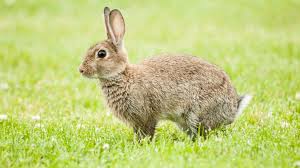
Humans and domestic animals not at risk
An exotic disease deadly to wild and domestic rabbits called rabbit hemorrhagic disease (RHDV2) has been making its way through the states of California, Nevada, Colorado, New Mexico, Arizona, Utah and Texas, and has also been identified in Mexico. The Vermont Agency of Agriculture, Food and Markets (VAAFM) is watching these developments with concern for Vermont’s population of rabbits, according to a July 9 news release.
Since March of this year, RHDV2 has caused the deaths of both wild and domestic rabbits in other states. Infected rabbits and jackrabbits may die so quickly that the clinical signs associated with RHDV2, including fever, inappetence, and neurologic and respiratory abnormalities, are not observed. The range of susceptible species in North America is currently unknown, but all rabbit, jackrabbit, hare and pika species are likely susceptible.
RHDV2 is not related to coronavirus; it is a calicivirus that does not infect humans or domestic animals other than rabbits.
“We are greatly concerned for our Vermont community of rabbit owners, including several agricultural operations. These owners of domesticated rabbits are encouraged to maintain strict biosecurity standards for their rabbits and to avoid importing rabbits from the states where RHDV2 has been identified. We also encourage rabbit owners to report findings of rapid and unexplained rabbit death or detection of signs that could be consistent with this disease to their veterinarian,” said Dr. Kristin Haas, VAAFM director of food safety and consumer protection and the Vermont state veterinarian.
Globally, this disease has caused dramatic declines in some wild rabbit populations since it was first detected in China in 1984. Since then, there have been confirmed cases in 40 countries, including in Europe, the Mediterranean, Africa, Asia, Israel, the UK, Mexico, the US, Canada, Australia and New Zealand.
“We’re quite concerned with the potential impact of this deadly disease and are currently working with the Agency of Agriculture to monitor rabbit deaths in Vermont,” said Mark Scott, director of wildlife for Vermont Fish & Wildlife. “We will continue our monitoring efforts of any adult wild cottontails or snowshoe hare found dead without an obvious indication on what killed it.”
For more information about the disease, visit: aphis.usda.gov/publications/animal_health/fs-rhdv2.pdf



